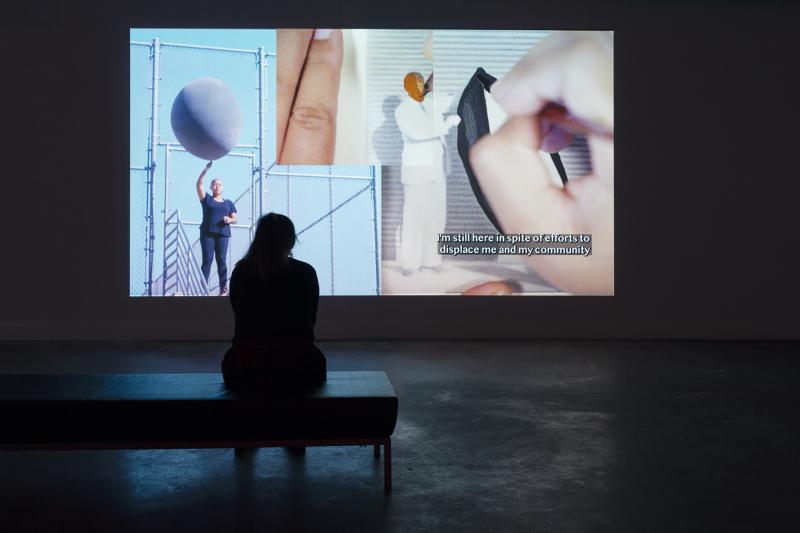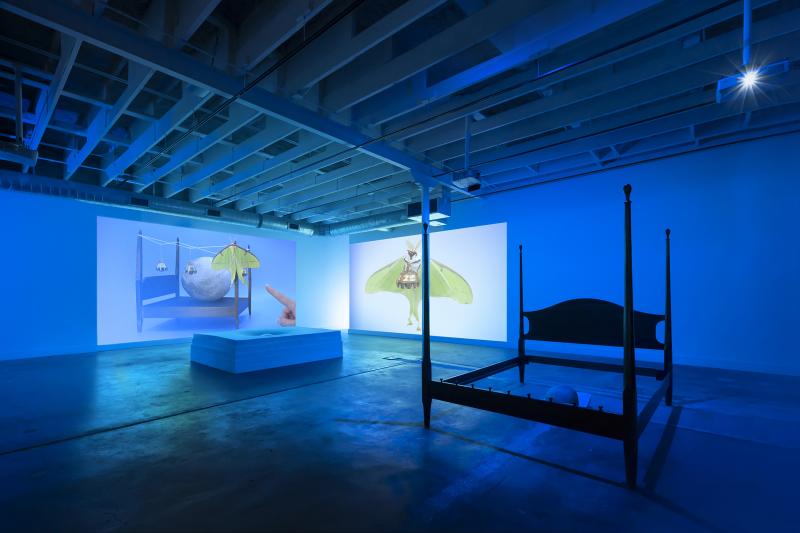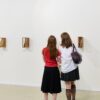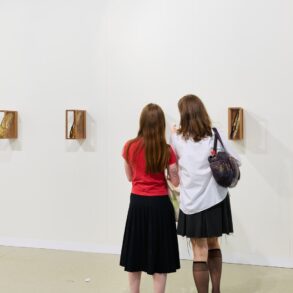 Techno Tessellation, mixed media on canvas and plexiglass, neon, 72 x 180”. Photo by Essentials Creative
Techno Tessellation, mixed media on canvas and plexiglass, neon, 72 x 180”. Photo by Essentials CreativeNEA: What do you hope people take away from viewing the New Commissioning Project exhibitions?
COWDEN: I hope viewers think about the remarkable range of ideas, materials, techniques, and effects that this group of five women have created. Contemporary art has such breadth; there is literally something for every viewer. Many people feel inadequate viewing the art of our time. I hope to banish this response. There is so much to be enjoyed by just responding to the environment each artist has created, noticing the colors, shapes, sounds, and scents that underly the exhibition.
NEA: What are some of the other ways in which W&TW engages with the community?
COWDEN: W&TW presents over 50 events a year. We have on-going exhibitions, an arts education program that serves over 1,000 under-resourced school children, performances, artist talks, and community conversations—most of which are presented free to all of Austin. Since 1986, W&TW has reached thousands of children who might never have visited a gallery or met a working artist. W&TW’s arts education program provides gallery tours and talks with exhibiting artists, hands-on art workshops, and professional development for teachers. These services are offered at no charge to students and teachers. Beginning in 2013, W&TW collaborates with AISD [Austin Independent School District] to provide art experiences for the GO Project, a program for young adults with special needs (from ages 18-22). In collaboration with Art on the GO, W&TW designs programs specifically for these disabled adults and serves 75 of them several times a year.
W&TW has collaborated with the Fusebox Festival for 14 years to bring performers to Austin. The Fusebox Festival has grown to be one of the most acclaimed performance festivals in the United States, drawing over 8,000 people to performance venues and other non-traditional spaces. We also offer our space for fundraisers and projects to other art organizations and artists as space allows.

Installation view of Virginia L. Montgomery’s (VLM) exhibition Eye Moon Cocoon, 2023. Photo by Essentials Creative
NEA: How has funding from the NEA helped support the work of your organization?
COWDEN: The NEA has had an outsized impact on W&TW. We were the first organization in Texas to be awarded a grant from the NEA in visual art. That early stamp of approval from a national grantor led to W&TW acquiring other support. We would not have been able to do what we do without support from the NEA.
NEA: What do you wish you could do more of as an organization?
COWDEN: There is never enough time or enough space to meet the needs of the artists whose work we have come to know. We’d like more exhibitions, more community conversations, more performances. Art brings people together; there can never be enough of it.
NEA: What advice do you have for aspiring artists?
COWDEN: Develop the hide of a rhinoceros because you must endure rejection after rejection; you must apply for exhibitions again and again. Never give up. It may take 10 rejections before you get an acceptance letter. Try to look at each rejection as being one step closer to getting that acceptance.
NEA: Finish this sentence. Women’s visibility matters because…
COWDEN: Women’s visibility in the world is vital. Women’s voices must be seen and heard!
This post was originally published on this site be sure to check out more of their content







